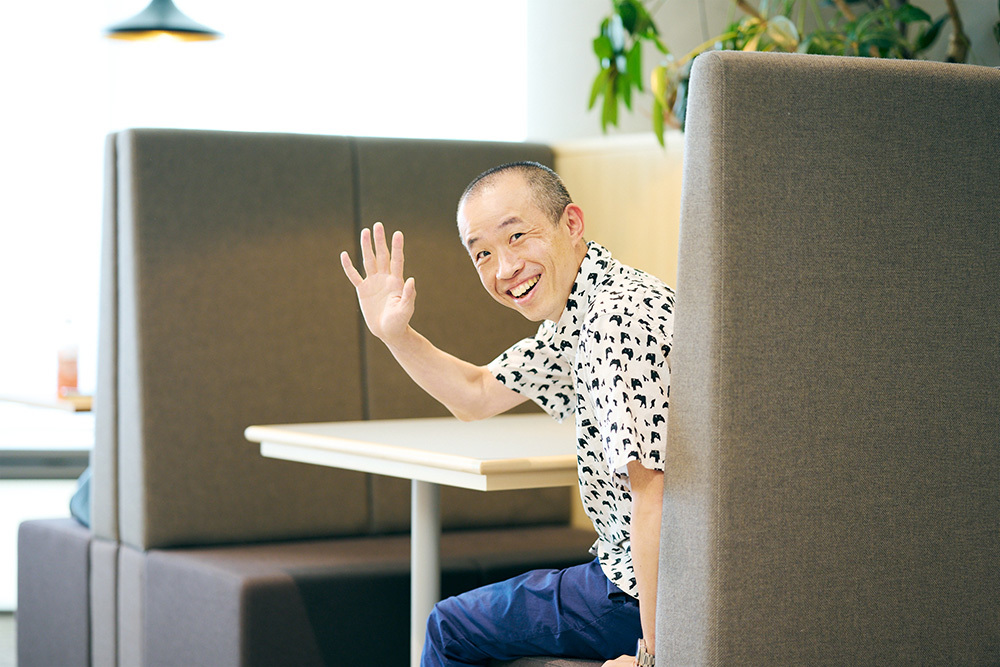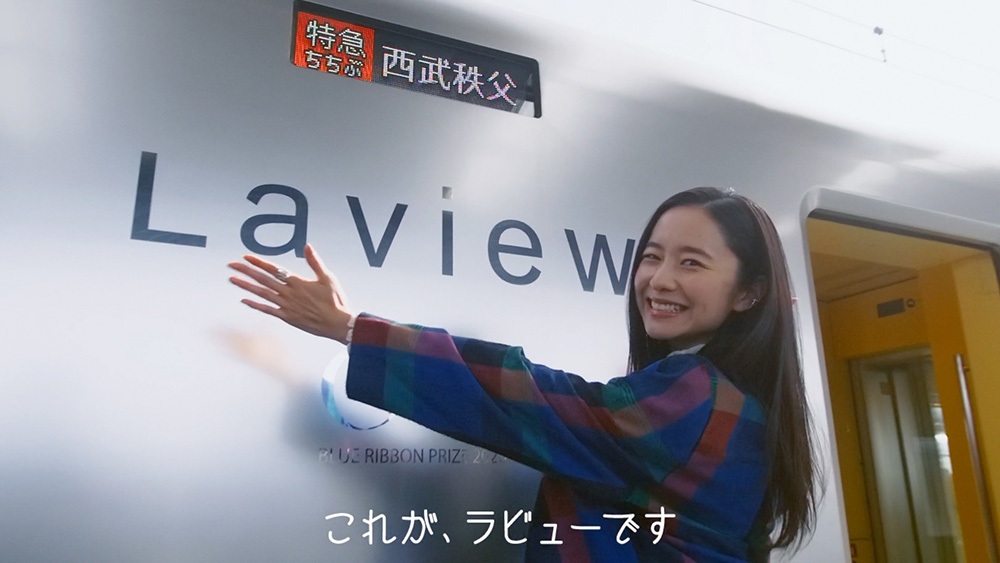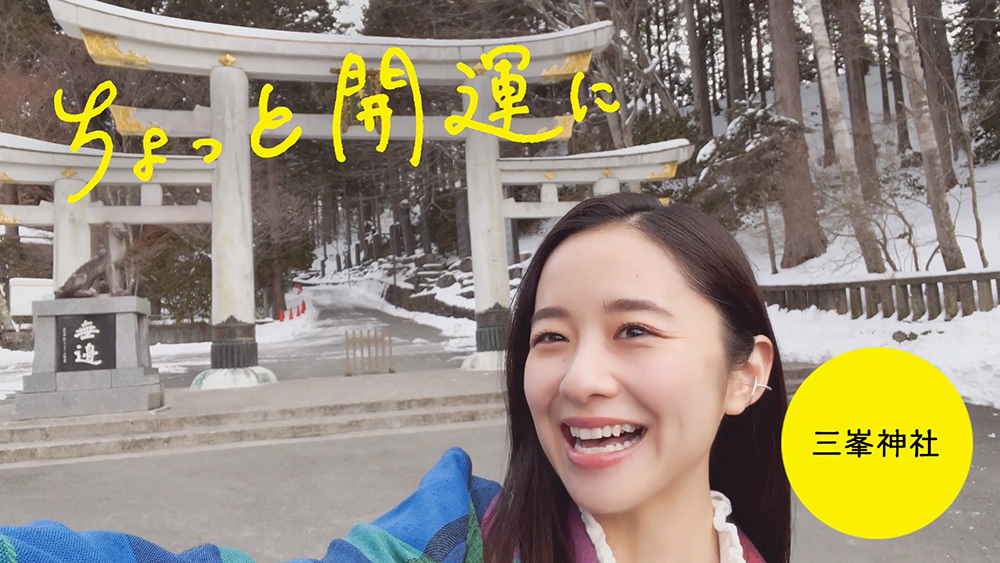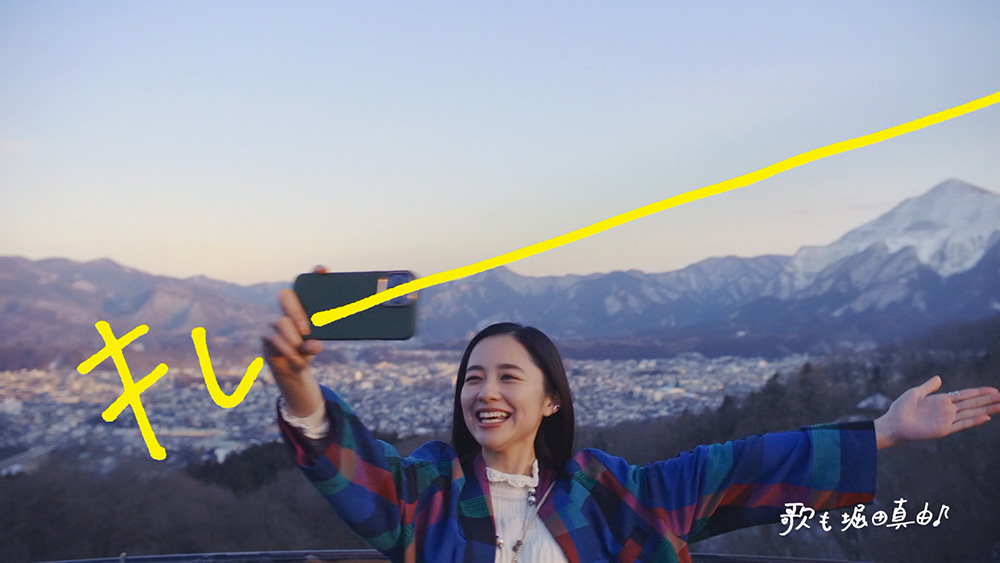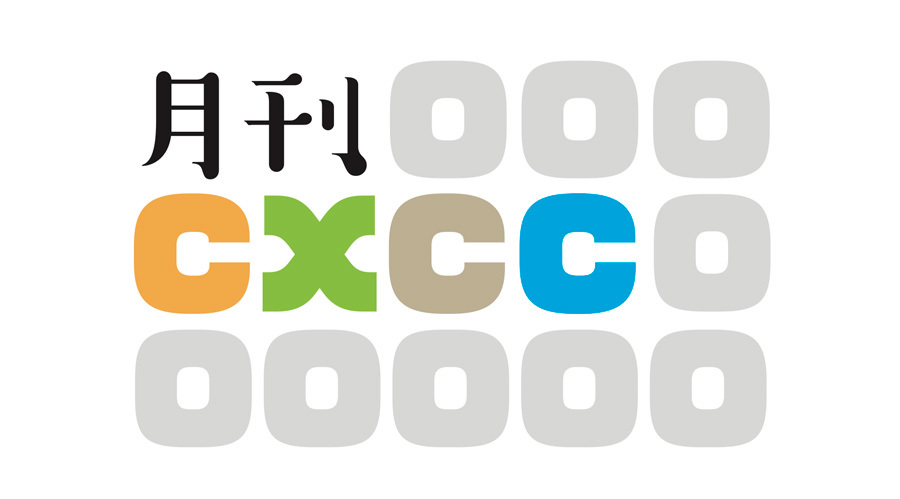How can Dentsu Inc.'s creative contribute to the ever-evolving field of CX (Customer Experience)?
To explore this potential, members of Dentsu Inc.'s CX specialist unit, the "CXCC" (Customer Experience Creative Center), share insights on CX and creativity in this series. This is "Monthly CX" ( For more on Monthly CX, click here ).
This time, we introduce Seibu Railway's destination campaign "Chotto Love You to Chichibu." We spoke with Kazuhiro Hayami, Creative Director at Dentsu CXCC, about this data-driven CX case study that increased tourist numbers by optimizing video ad delivery using cluster analysis.
[Kazuhiro Hayami Profile]
Dentsu Inc.
Customer Experience Creative Center
Creative Director/CM Planner
After working at the Chubu Branch and Head Office 3CRP, he volunteered for transfer when CXCC was established in 2021. He specializes in CX creative direction, designing optimal customer experiences for brands centered around videos that "communicate effectively," ranging from 6-second spots to long-form content.
Major awards include ACC Film Gold, Galaxy Awards, Consumer-Selected Advertising Contest, Tokyo Copywriters Club Newcomer Award, and Dentsu Advertising Award Regional Grand Prize.
Clustering by "behavioral starting points" and optimizing through test marketing

Seibu Railway Destination Campaign "Just a Little Love to Chichibu"
Monthly CX: For this campaign introducing various Chichibu tourist spots through videos, I hear you significantly boosted effectiveness by optimizing digital ad video delivery through cluster segmentation. What approach did you use before adopting this method?
Hayami: I've been handling Seibu Railway for five years now. Previously, we targeted video distribution based on demographics (attributes like gender and age).
For example, we'd create video content with the goal of "attracting young people," then distribute those ads targeting young audiences, measuring CM favorability and visitor numbers. Rather than creating original video content specifically for digital ads, the basic approach was often to start with a TV commercial, which would then be repurposed as digital ad material on platforms like YouTube.
The campaign site hosts TV commercials, web movies, and cluster-specific appeal videos.
*Click the image to watch the video
Monthly CX: So this time, you shifted to cluster targeting. Could you explain how you defined those clusters?
Hayami: First, we investigated "what kind of people have the potential to visit Chichibu?" We made it a core strategy to cluster and target people based on their behaviors, matching conditions like "traveling by train, not car," "living in Tokyo," and "traveling outside Tokyo."
Monthly CX: When you say "behavior-based," are you referring specifically to things like "gourmet dining," "historical site tours," or "Instagram-worthy experiences"?
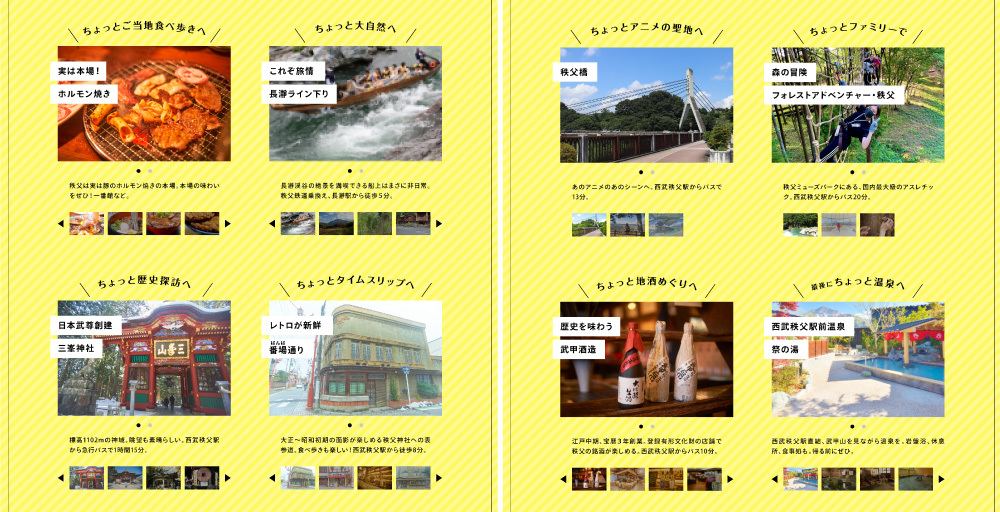
Using these clusters to match which appealing spots in Chichibu appeal to which people
Hayami: Yes. Previously, advertising appeal points (what locations or charms of Chichibu to highlight as a tourist destination) were decided based on perspectives like "major attractions" or "places we want to showcase as Chichibu." By starting with the target's "behavior," we introduced logic into how we determine appeal points.
Monthly CX: So you're classifying appeal points by target, like "this restaurant for food lovers" or "this shrine for the history buff cluster."
Hayami: Of course, the desire to showcase specific places like "We want to show this shrine!" exists from the start. But now, when selecting them, we apply logic like "This shrine would be great for the history exploration enthusiasts cluster."
Monthly CX: So you analyze target behaviors to determine what to promote to whom.
Hayami: Actually, during the fall/winter season before this spring campaign, we ran test marketing banners targeting the four clusters identified in our research. Based on evaluating those banner results, we decided to drop two of the four clusters for the spring campaign and add one newly identified cluster instead.
Monthly CX: So you changed the cluster settings. Indeed, the spring campaign videos we saw were three types.
After banner testing, the spring campaign clusters were finalized as "Gourmet," "History," and "Outdoor."
*Click the image to watch the video
Hayami: When we had the initial four clusters, the percentage of people we could reach was 85% of the total audience. By adjusting to three clusters, we were able to increase that to 90%.
Monthly CX: That's impressive. By improving the accuracy of the classification method, you reduced the number of clusters while increasing the reachable audience. Could you elaborate a bit more, within reasonable limits?
Hayami: In the shrine example mentioned earlier, we discontinued the "Instagrammable" cluster after reviewing the results of the autumn/winter banners. We realized through testing that the behavior of "seeking photogenic appeal" can apply to both shrines and gourmet spots, depending on how they're photographed. So, it ended up being surprisingly vague.
Monthly CX: So in terms of narrowing down spots, it wasn't effective.
Hayami: Even when starting from actions, I think pinpointing the underlying interests and preferences—closer to the motivation for visiting Chichibu itself—would actually increase the likelihood of people coming.
Monthly CX: So it's about segmenting based on the hobbies and preferences that motivate the action – "what attracts them about the trip" – rather than the action itself as an outcome, like "what they do on the trip."
Whether agile or data-driven,
what's crucial for creativity is communication and teamwork.
Monthly: Next, please tell us about the production process. This flexible approach of adjusting appeal points based on immediate results seems like it would increase the workload for video production.
Hayami: The survey data for the fall/winter banners came in right at the last minute before spring filming, so we scrambled to adjust the locations and content from there.
Monthly CX: That tight schedule highlights the challenges of agile approaches. I saw the final video, and it didn't feel rushed at all. The key messages were clearly organized, and the visuals conveyed the message in an enjoyable and beautiful way.
Hayami: It was organized? (laughs) I'm glad to hear you say that.
Monthly CX: It wasn't just organized—I was amazed by the natural feel of the footage. It didn't look like a typical commercial shoot; it had the organic quality of a clip taken straight from a travel show or documentary.

A documentary-style video unfolding with natural expressions
Hayami: As you mentioned, we aimed for a documentary-like feel. We wanted to capture the actual journey, so we used multiple cameras, even gave one to Ms. Mayu Hotta who appeared in it. We tried various approaches, and it worked out well.
The creative team, including the production company, had been working together on the Chichibu campaign for a long time. Even with the fast-paced, sometimes chaotic nature of the agile approach, the core objectives remained unchanged.
Early on, we thoroughly communicated our vision—"This is what we want to achieve"—to everyone, including the director, planner, and producer, and discussed the approach. Even when methods changed, what ultimately mattered was maintaining solid communication and teamwork.
CX Creative Advances on Two Wheels: "Fun" and "Accuracy"
Monthly CX: I thought it was brilliant how each shot felt naturally shot by an individual yet was meticulously calculated and crafted. What are the key points for this kind of data-driven CX creative work?
Hayami: I believe the two axes of "interestingness" and "correctness" are extremely important.
Monthly CX: "Interest" and "Accuracy." Could you elaborate?
Hayami: "Correctness" refers to data-driven accuracy—accurately identifying the target audience. This includes selecting the right media channels ("Where can we reach these people?") and choosing the right visuals. For Chichibu, it also means selecting locations ("What should tourists see here to make them want to visit?").
Monthly CX: And "interestingness"?
Hayami: Even if every data-driven decision is correct, if the final product isn't interesting, it's completely useless. Ultimately, whether the creative is charming is crucial.
Monthly CX: After watching the video, I simply thought, "Chichibu seems surprisingly fun!"

Every video is simply fun and sparks interest.
Hayami: That reaction is the most gratifying part. If that impression sticks, the video is a success. Speaking generally, not just about Seibu Railway, past creative often relied solely on the "interestingness" of the concept or copy. But with data-driven CX creative, "correctness" has been added to that. Balancing "interestingness" and "correctness" as two wheels driving forward is both the challenge and the fun, and I believe it's crucial.
Monthly CX: In the old style, there was a time when the strategy team handled "correctness" and the creative team handled "interestingness." But now, you're saying these are converging.
Hayami: They are converging, and by tracking what we do as data, we can actually see the results—or verify the answers.
Monthly CX: Conversely, is there a fear that the answers become too clear? The fear that when you're wrong, it becomes painfully obvious?
Hayami: That's true. But that's part of what makes it interesting.
Monthly CX: And when it succeeds, like this time, you know it for sure.
Hayami: The client was very pleased with this campaign. They felt we truly highlighted so many great aspects of Chichibu.
Monthly CX: Has this shift to a data-driven, agile approach changed your relationship with clients?
Hayami: I feel we've deepened our mutual understanding with clients. We're advancing campaigns looking in the same direction, and a strong sense of partnership has really grown.
We meet much more frequently than before—like testing banners first and then deciding how to proceed with the next video based on those results—and we have more conversations. Of course, we were already on great terms with the client, but since we started working together on these agile projects, we constantly share what we're doing now and where we want to go next. I feel our mutual understanding and trust have deepened even further.
Monthly CX: It's truly a state of looking in the same direction.
Hayami: It feels like we're standing side by side with the client. Together with the customer.
Monthly CX: Finally, if there's anything you'd like to challenge yourselves with in CX Creative going forward, please tell us.
Hayami: While it might be presumptuous to call it the final form, we've fully realized the full-funnel approach—CMs, web movies, banners, and so on. Looking ahead, I'd like to incorporate new experiences into the overall campaign as part of our CX efforts.
Monthly CX: What do you mean by new experiences?
Hayami: It's still a bit vague. It could involve integrating new technology, or perhaps building a campaign around a real-world event. In terms of current trends, incorporating communication using the metaverse might be interesting too.
(Editor's Note)
In Monthly CX Issue 8, we heard about Seibu Railway's campaign that enhanced effectiveness by tailoring creative approaches and presentation methods based on customer clusters.
Regarding how to segment clusters, identifying the specific interests, preferences, and motivations that drive people's actions makes a significant difference in effectiveness.
We also learned that agile, flexible creative production now demands even denser, more precise communication and teamwork than before. This deepens trust and understanding between clients and creatives.
This interview was conducted in collaboration with 'CX Creative Studio note' ( learn more about CX Creative Studio note here ). We are also working with Dentsu Digital Inc.'s CX Creative team, alongside the Dentsu CXCC team, to collect and introduce a broader range of case studies. If you're interested, please check that out as well.
If you have requests for future topics or case studies, please send a message to the Monthly CX Editorial Department via the contact page below. Thank you for your continued readership.


